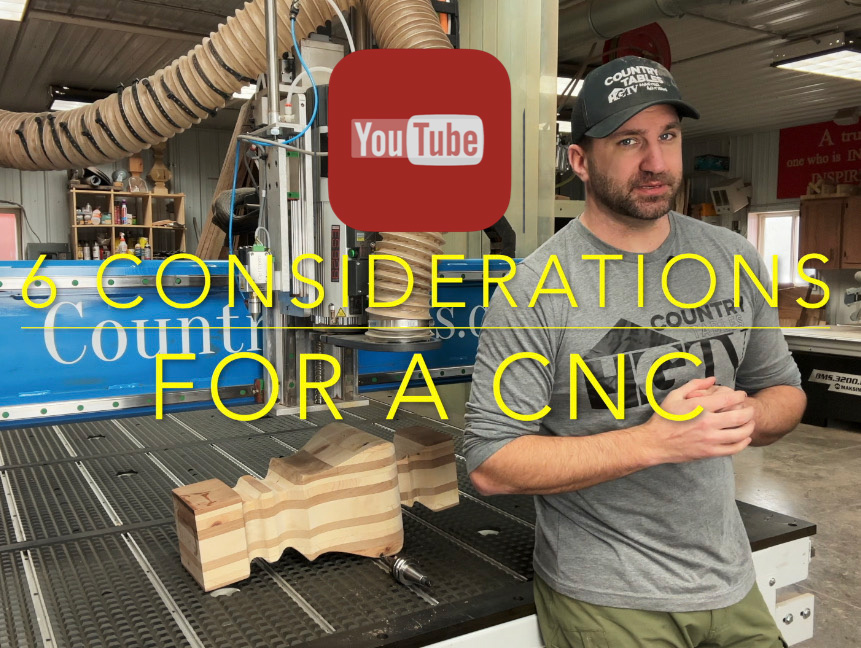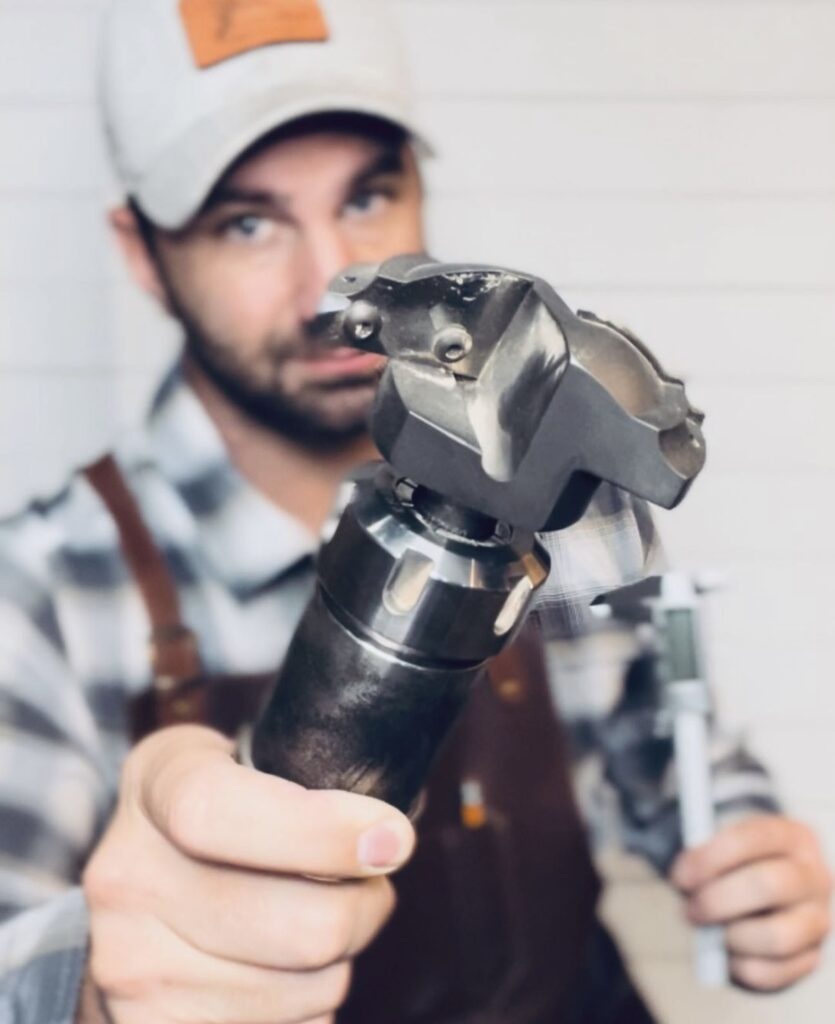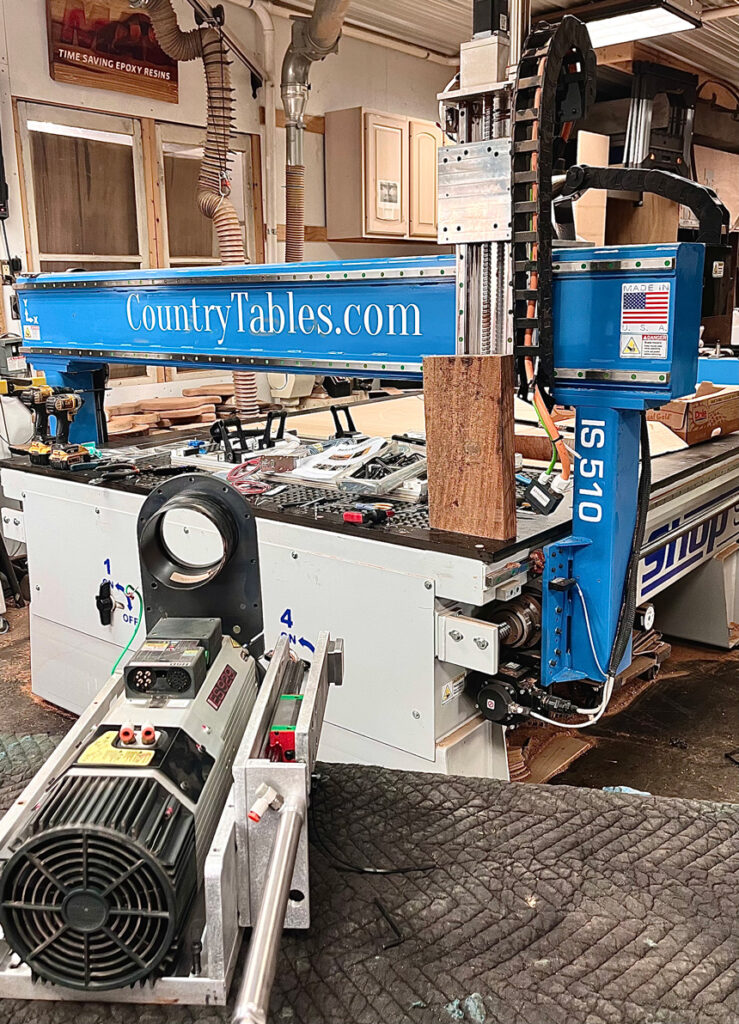IWF Woodworking Today
Growing into Technology
April 4, 2023 | Dan Wellens

It’s no surprise that most woodworkers are challenged by technology and even more confused by the term G-code. For generations, manual labor tooling has been the backbone of our profession. Consider the simple handsaw transformed into a motorized handsaw. The two were similar enough so as to maintain cognitive correlation of each tool and its progression. The CNC is a tool that did not have the luxury of progression.

Most woodworkers would tell you that the CNC’s perceived complexity—as opposed to capacity—is the main concern. The perception of how it actually operates is the source of intimidation for most woodworkers. So why is the CNC the albatross of woodworking machines? One word: G-code.
What, exactly, is G-code? It is a simple programming language for CNC machines. G-code consists of a line of code that is organized into blocks to perform one operation at a time. Each number ideally represents a location to move the cutting head. But here’s the best part! You do not need to know G-code to operate a CNC—just as you don’t need to know HTML to build a webpage. With CAM and CAD software it’s as easy as point and click. Most new CNC owners are up and cutting within a few hours after their initial set up. Not all CNCs are created equal. Today there is literally a CNC made for everyone. There are CNC machines created to be utilized on a desk top, some mount on a wall, and some have wheels. The vast majority maintain a standardized look moving on three axes. (Z: up/down; Y: left/right; X: back/forth)
Here are six key considerations before investing in your next best investment.
- Grow Into It
One of the biggest mistakes new woodworkers make is to purchase a CNC only to outgrow it in a short time. Remember that the CNC will more than likely become the backbone of your business. Quite simply the more you invest into your machine, the more precision and durability you will derive from it. My advice is always to grow into your machine. One machine is more cost effective than two.
- Gantry Height
The gantry is the cross beam section that holds the spindle. The height of the gantry determines the thickness of the material you can mill. Some CNC models only have a clearance height of 2”, while some exceed 12”. An important factor is also the stroke travel which is the total travel of “Z.” (Example: 12” of clearance with a 4” bit gives you a reduced clearance height of 8 inches. Unless the stroke travel is greater.) The higher the gantry clearance and the longer the stroke travel, the more versatile you can be with the scope of your projects.

- Stabilization
CNCs typically move on a three axis rail. This movement can be performed by utilizing ball screws or rack and pinion systems with different base designs. CNCs typically use one of three base designs; Suspended Frame, Bolted Frame and Stacked Steel. One danger of CNC operation is cavitation. Extreme vibration of the machine can cause bearing, motor, and/or inaccurate chip-load to the bit. Typically more industrial CNC machines utilize ball screw technology with a stacked steel construction. Research what system you need and how much precision you require for what you are manufacturing.
- Manual vs. Automatic Tool Changer
Imagine you are using a hand drill. First, you need to use a drill bit to drill a hole. Next, you change your bit to counter sink to accommodate a screw head. Finally, you change your bit to a Phillips driver. You just changed your drill bits three times. An ATC (Automatic Tool Changer) will automatically change out bits while running one program on the CNC, saving you time and increasing your efficiency. This is the biggest benefit to operating a CNC.
- Adaptations
CNCs are constantly evolving. My CNC is now equipped to laser engrave, conduct digitize modeling, and run remotely. This was not something I was aware of when I first purchased my CNC. With technology advances, CNCs are not just for milling anymore. Be sure to research what accessories are available for your preferred machine.
- Brand & Support
Like any machine, your CNC will require maintenance and technical support. Switches will wear out and other mechanisms will break. How good is the technical support and parts supplier for the machine you purchase? This was one of the deciding factors in my CNC purchase.

Apply to Exhibit
Grow your business at the premier global woodworking trade show.
Show Hours & Location
International Woodworking Fair
Tuesday–Friday
August 6–9, 2024
Tuesday–Thursday
8:30 AM–5:00 PM*
Friday
8:30 AM–2:00 PM*
*Building A opens 7:30 AM Tue-Fri
Georgia World Congress Center
285 Andrew Young International Blvd
Atlanta, GA 30313
